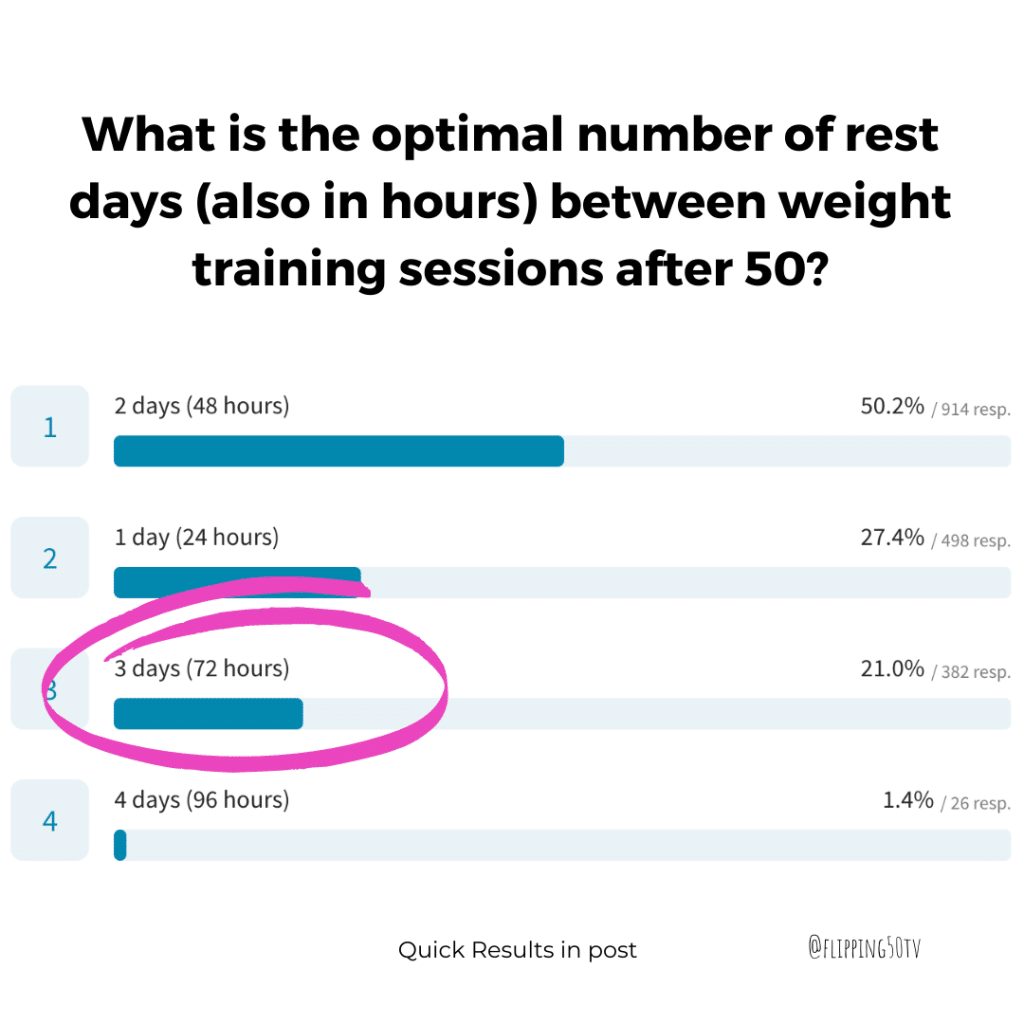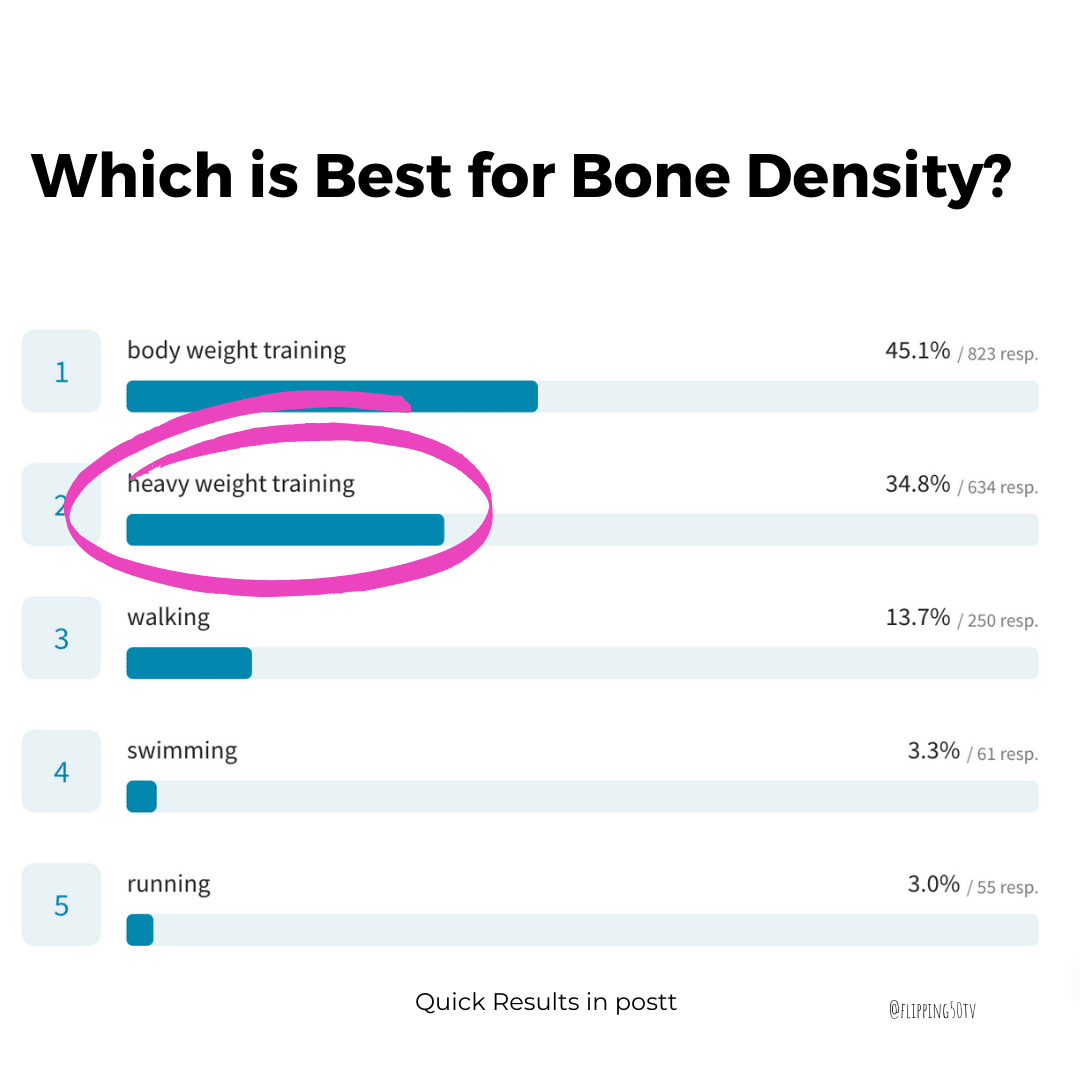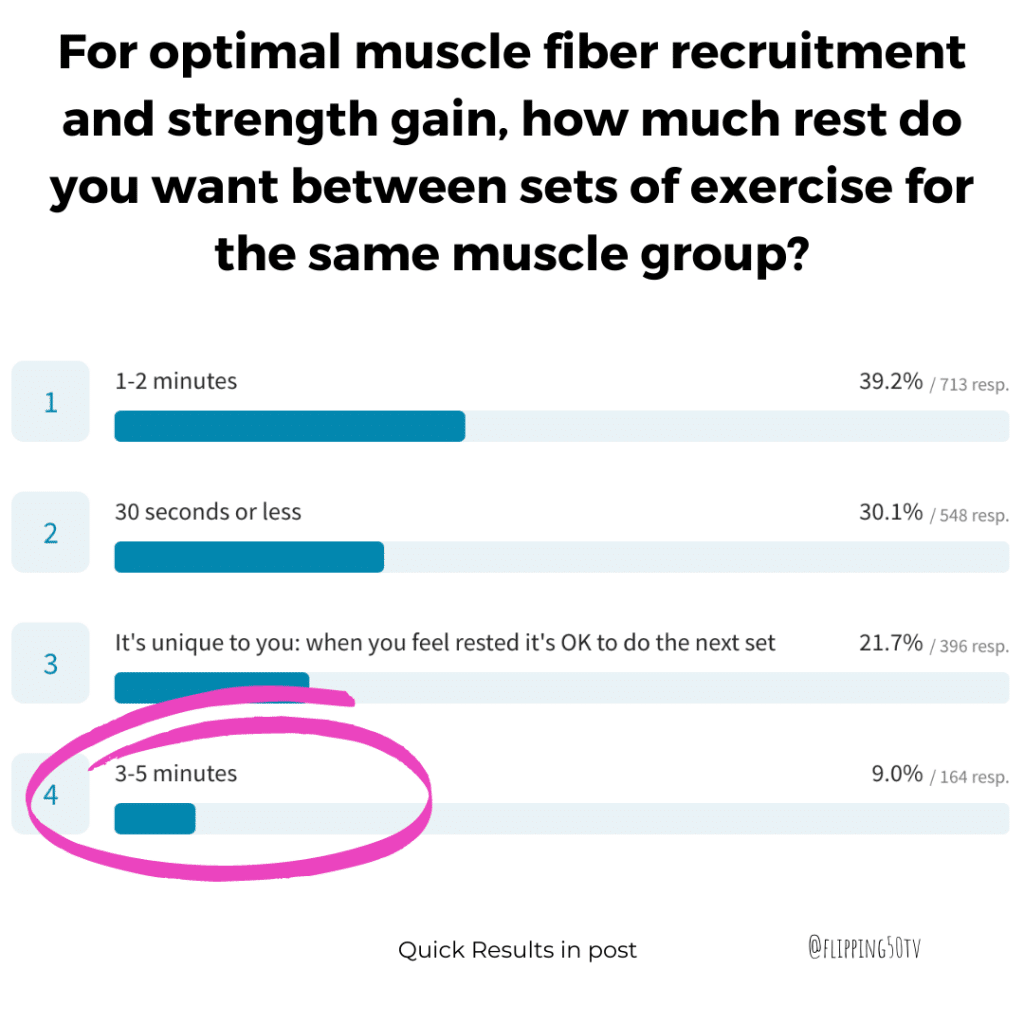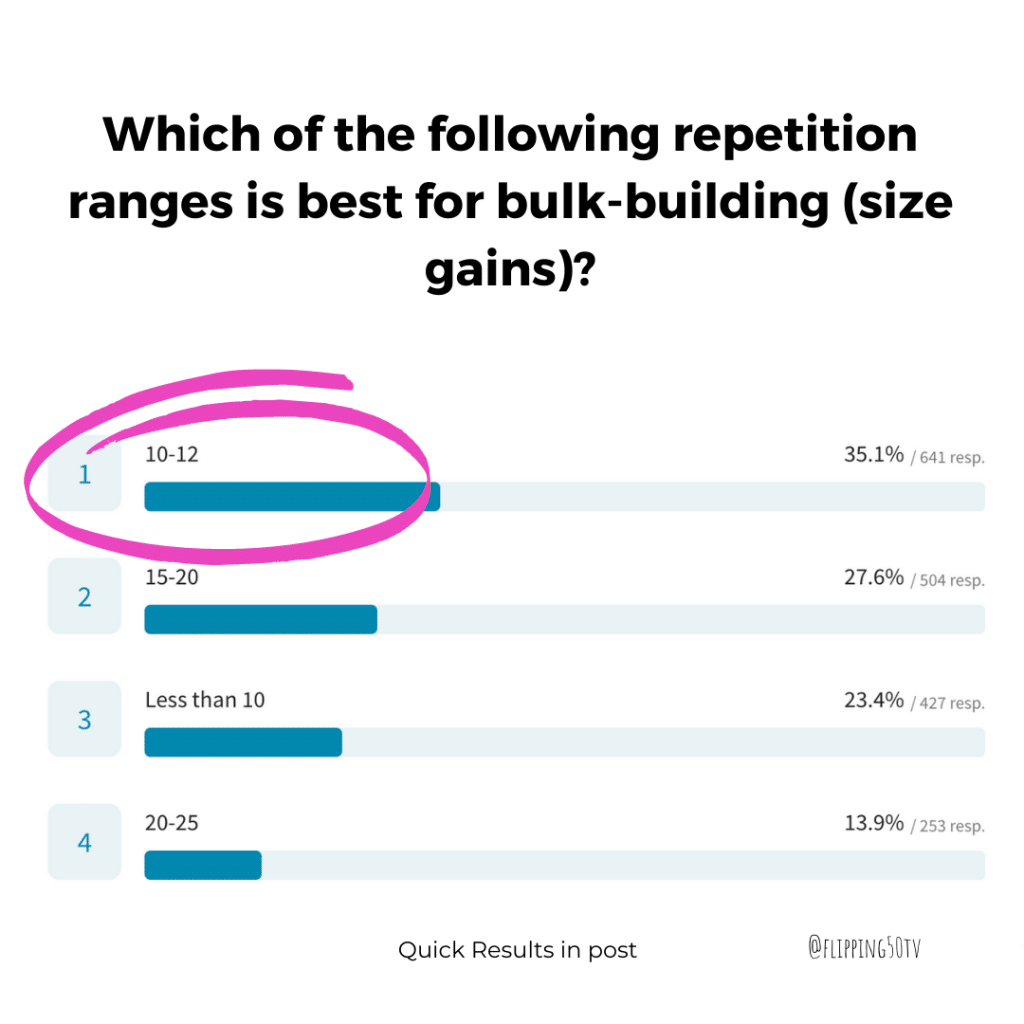Jul 23, 2021
For women over 45 strength training is the absolute most important exercise component. It will continue to be until you take your last breath.
To make this personal, my mother just experienced a hip fracture and the inevitable hip replacement that happens after. Her recovery won't go as smoothly as it did 15 years ago. Why? loss of muscle she has experienced since. That in itself may have led to the cascade of events that caused the fall. But most definitely a period of time in bedrest is devastating for older adults.
Back to you... This post is a reveal and deep dive into results of a quiz intended to assess women over 45 strength training knowledge. Here are the results, and why they're important. In an earlier post update I shared one significant question about bone density. Here are the other nine questions. You're seeing the actual quiz data collected from over 1800 women over 45 strength training quiz.
Let's dive in. I'll take this one question at a time.
Women Over 45 Strength Training 411
Q: Which is Best for Bone Density?
A: Heavy Weight Training
At a glance the correct response was selected by almost 35% of women (that's an increase from pre-pandemic responses of 10%). That's good.
However, what's alarming is that body weight training was selected by 45% - almost 50% of women believe that push ups, body weight squats, or yoga will improve bone density. The question asked for BEST. This should have been an easy answer by a landslide.
To reach adequate stimulus for bone progressing to a weight that encourages inability to do 10 repetitions, meaning fatigue in 10 or fewer is required.
Though that isn't possible for every woman across all joints and exercises due to unique conditions or injury history, it is the correct answer.
Q: Which repetition range results in the most optimal bone density improvement?
A: 10 or fewer repetitions
I won't dwell on this question because I gave it away with the previous question. Only 19% knew the right answer. At least responders are warm with 39% answering 10-12 receptions.
As you'll learn later there is reason for this confusion when I ask about best for building bulk or muscle size.
Q: What's the optimal frequency for menopausal women (women over 45 strength training)?
A: Surprisingly, this is 2, and not 3, but it is most definitely not 4. Here's the why:
Women in menopause need as much "more" recovery as they do "more" muscle stimulation. The best kind of "more stimulation" comes from the type of volume that is more sets, more total weight lifted for more intensity, not more days a week of moderate exercise.
Some fitness professionals are sharing small studies reporting volume is important for women over 40. It's true. What's also true is the volume of recovery time increases.
In other shares by fitness pros, the recommendation is 3 times a week, however those studies are not a) all about heavy each time b) or featuring women in menopause as subjects.
For women in menopause prone to adrenal fatigue, and increased injury risk, the sweet spot of two is ideal. The other magical thing that happens in studies testing post menopausal women is they have so much more energy with 2 strength and 2 interval sessions (when ready) that they expend far more energy the rest of the week. There is no "couch compensation" that occurs when there's a high volume of exercise without time between.
Q: For optimal muscle fiber recruitment (aka results) how much time should occur between exercises using the same muscle group?
A: 3-5 minutes is the idea sweet spot.
The goal is not to sit on a machine if you're at the gym, or to sit and wait idly between sets of exercise at home. What self-respecting woman in midlife has that kind of time or patience?
The ideal is to format workouts so that they do that naturally. You absolutely don't want to waste the time and effort you put in, for a small percent of results that could be yours.
Protocols used based on research about women just like you are your best bet. Watching your timing and speed (or lack there of) that you move back to the same exercise is key to fine tuning results.
You'll pick up a bigger weight and be more fresh in doing this, creating more opportunity for fitness.
 Q: What is the optimal number
of rest days (and or hours) between weight training sessions after
50 (and often already true at 40)?
Q: What is the optimal number
of rest days (and or hours) between weight training sessions after
50 (and often already true at 40)?
A: 72 hours, or 3 days is optimal for most women.
This is something you can test. What I've found to be true over 37 years for clients - my own, and supervision of over 250,000 personal training sessions, is that women fully recovered can work harder.
Women doing more than every 72 hours or twice a week, tend to not lift as heavy, still be sore, and experience more "tired" and breakdown than the greater fitness they seek.
Even among younger women, many fitness pros have realized this to be true for them as well. Recovery is very unique to individuals. True, as you increase fitness beyond the couch you may find you need a little less recovery time, then again as you cross into higher fitness levels you will come back to needing more time between when you truly have effective workouts.
This doesn't mean you can't do something. It just means more of the same thing (e.g. HIIT isn't really getting you more fit: it's getting you tired and your brain the fix it thinks it needs).
This is really alarming because it tells us that more than 75% of women over 45 strength training are over exercising and under achieving results for creating muscle mass and bone density.
Q: Which combination is BEST for changing body composition?
A: Yay! Strength training and HIIT. Though I'm thrilled to see that long slow cardio wasn't selected, I want to go deeper.
It isn't ALWAYS the right thing to burn fat - HIIT and
strength training. There are times when your body is
telling you doing HIIT is going to tip your stress scale so far
that you'll gain fat or experience weight loss resistance doing it.

Q: Which is the BEST work interval: recovery interval ratio for beginners doing interval training?
A: Correct answer is.... definitely more recovery... 20:60the second best answer would be #3 20:40 so be sure you're on track for this.
Essentially 46% of women answered with an acceptable ratio. But 24% are doing a little to much too soon and 20% are throwing themselves under the bus doing Tabata intervals designed based on young fit male athletes working at 110% of their maximum.
That's not a friendly formula for women in menopause.
Q: Which of the following repetition ranges is best for bulk-building (size gains)?
A: The answer is 1012! Yay. Not that this is a goal for many women, yet, hold the phone.
If you can't lose fat, gaining lean muscle mass is exactly the way to get better results. If you're frail, it most definitely is.
Q: After High Intensity workouts (especially strength) what's the ideal window for a woman over 50 to ingest a high protein meal (if she's not doing fasted exercise)?
A: The exact sweet spot for muscle protein synthesis is 90 minutes, so answer #2, 60-120 is correct.
This surprises many - including trainers and nutritionists who are familiar with drinking chocolate milk within 30 minutes after. For older adults (and young) muscle protein synthesis should govern the choice.
*if you're exercising fasted (not recommended) eat immediately: your muscle breakdown is occurring because of the fast + the workout + midlife.
Q: After a strength training session how many grams of protein (minimum) does research suggest is optimal for muscle protein synthesis?
A: A minimum threshold of at least 30 grams (of complete protein) is optimal. More is sometimes better but within limits.
What we need to do is be in the sweet spot for absorbing the required essential amino acids. Key to know that collagen is not complete protein and alone does not count toward your daily muscle needs.
In a recent podcast I discuss Essential Amino Acids, who might want to consider, and how I use them. If you're plant-based or you're skipping on your protein you need to listen.
Not in a program or program you're in not working? Take a 5-day reset:








